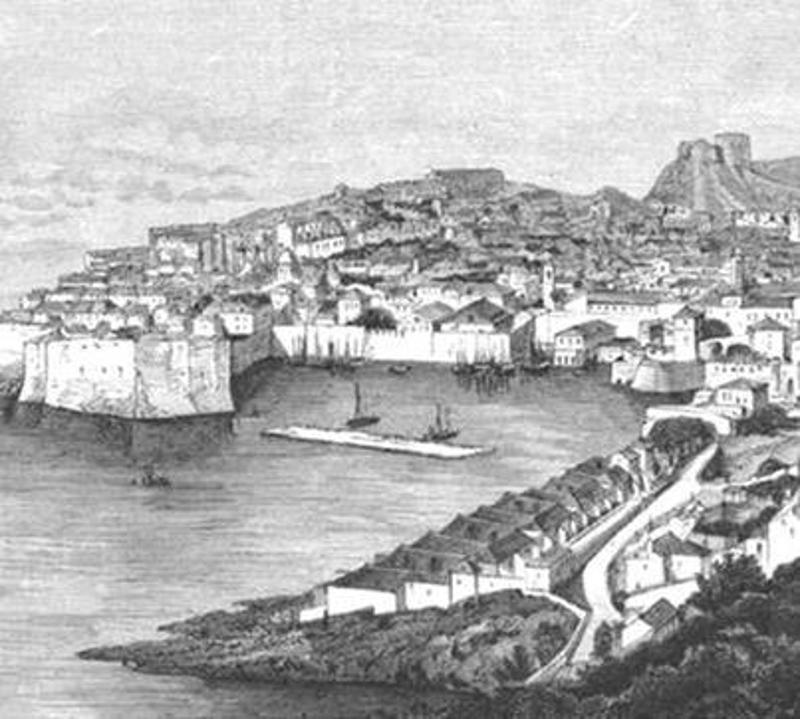NVCC History of Western Civ. Final Project
You finally arrive in the Republic of Ragusa to the city of Dubrovnik. The city has a population of about 6,000 people. This particular city has ties to both the West and the East. After a time spent paying tribute to Venice after the fourth crusade, Ragusa gained its independence around the mid 14th century. The diplomats of Dubrovnik even obtained papal permission to trade with “the enemy” - The Ottoman Empire. A yearly payment to the Ottoman Empire of about 12,500 ducats enables Ragusa protection and the right to trade with the Balkans. The special status Dubrovnik had with the Ottomans was mutually beneficial. Ottomans gained an outlook to the Adriatic sea from which they imported luxury goods. In this way they also gained a “window to the West”, from which they gathered intelligence. The Lazzaretto is a long rectangular stone building complex equipped with stables and rooms for merchants to sleep in, just like the Han. Its located outside of the city, near the shore. What makes this merchant resting site different from the others is how long one is supposed to stay here. As a traveler coming from outside of the city you are supposed to stay at this point for forty days. This is to ensure that you aren’t bringing in disease. A military officer stands guard here with fifty soldiers, watching over the guests during the quarantine period. The gates are shut every night, and then opened in the morning. Once your forty days have passed the gates are opened for you and you make your way towards the city. This is your last stop. Before you return you take some time to wonder about the narrow streets of the city. Around you, you hear at least three languages being spoken; Latin, Italian, and Slavic. You happen upon the city square and marketplace. Before transporting home with all your newly acquired possessions in-tow you buy a bottle of Italian wine.
maggiebabic
6 chapters
6 Mar 2021
Lazzarettos of Dubrovnik
February 19, 1581
|
Dubrovnik, Republic of Ragusa
You finally arrive in the Republic of Ragusa to the city of Dubrovnik. The city has a population of about 6,000 people. This particular city has ties to both the West and the East. After a time spent paying tribute to Venice after the fourth crusade, Ragusa gained its independence around the mid 14th century. The diplomats of Dubrovnik even obtained papal permission to trade with “the enemy” - The Ottoman Empire. A yearly payment to the Ottoman Empire of about 12,500 ducats enables Ragusa protection and the right to trade with the Balkans. The special status Dubrovnik had with the Ottomans was mutually beneficial. Ottomans gained an outlook to the Adriatic sea from which they imported luxury goods. In this way they also gained a “window to the West”, from which they gathered intelligence. The Lazzaretto is a long rectangular stone building complex equipped with stables and rooms for merchants to sleep in, just like the Han. Its located outside of the city, near the shore. What makes this merchant resting site different from the others is how long one is supposed to stay here. As a traveler coming from outside of the city you are supposed to stay at this point for forty days. This is to ensure that you aren’t bringing in disease. A military officer stands guard here with fifty soldiers, watching over the guests during the quarantine period. The gates are shut every night, and then opened in the morning. Once your forty days have passed the gates are opened for you and you make your way towards the city. This is your last stop. Before you return you take some time to wonder about the narrow streets of the city. Around you, you hear at least three languages being spoken; Latin, Italian, and Slavic. You happen upon the city square and marketplace. Before transporting home with all your newly acquired possessions in-tow you buy a bottle of Italian wine.

Share your travel adventures like this!
Create your own travel blog in one step
Share with friends and family to follow your journey
Easy set up, no technical knowledge needed and unlimited storage!